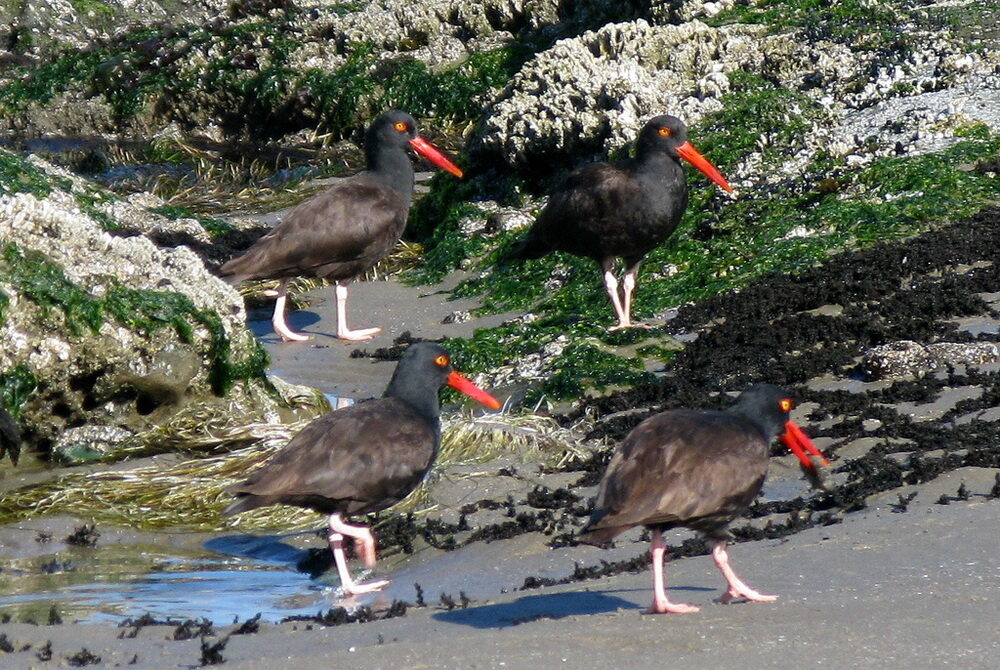Resources > News
Black Oystercatcher Survey Still Taking Place

The annual citizen science project to survey Black Oystercatcher nests is coming up again, May through August, and volunteers are needed. The survey is a partnership among the U.S. Fish and Wildlife Service, the U.S. Geological Survey, Portland Audubon, and local conservation groups. CoastWatch is not one of the organizers of the project, but in previous years many CoastWatchers have shown an interest in participating.
Plans have changed somewhat, due to coronavirus precautions. The in-person training sessions for volunteers had to be cancelled. In their place are two virtual training sessions, on May 9 (10 a.m. to noon) and May 20 (6-8 p.m.). See separate listings in the events calendar.
Anyone interested in the survey, or simply wishing to learn more about this fascinating denizen of the shoreline, is invited to sit in on the virtual training sessions. Due to the current shelter-in-place limitations, the survey will rely this year on experienced volunteers who live near the nesting sites.
The Black Oystercatcher is a unique shorebird species with a memorable call that inhabits the rocky intertidal zone (where, despite the name, there are no oysters—the bird eats other shellfish). Because of their small global population size, low reproductive rate, and reliance on rocky intertidal habitats, they are considered a “species of high conservation concern” and act as an indicator of intertidal ecosystem health.
Portland Audubon and its partners are monitoring Black Oystercatchers to provide new information on this species’ biology including an Oregon-wide population estimate, nesting success, and human disturbance factors.
These efforts inform protection measures for this species and also play a role in work to secure better protections for Oregon’s iconic rocky shoreline habitat and the state’s marine reserves and protected areas. A critical part of this project is engagement and outreach to local communities up and down the coast.
This year’s project is more limited than in previous years. It will involve locating and monitoring nests, but not the “abundance survey” (a count of all birds on the coast) done in previous years. During the past five years the oystercatcher project compiled data through the abundance survey, and that data has now been compiled and published in a peer-reviewed journal. Now the next step is underway—pooling data from Oregon and California into a region-wide population variability analysis.
But the nest survey goes on, and indeed will take on more focus. Experienced volunteers are needed back, but this year won’t be asked to mentor new volunteers. Prospective new volunteers learn from the nest monitoring protocol, but by itself that doesn’t provide sufficient preparation.
If you would like to consider volunteering for the oystercatcher survey, contact Frances Buchanan, Audubon’s field projects coordinator, asopcoastalbirds@gmail.com, and Joe Liebezeit, Staff Scientist & Avian Conservation Manager, jliebezeit@audubonportland.org, and provide the following information:
1) Would you like to volunteer (again)?
2) What area of the coast would you like to cover? You can be specific to a particular site or a section of the coast.
3) Effort: How often would you be willing to conduct nest monitoring during May-August?
4) Would you like to attend one of the virtual trainings? If so, please RSVP and let them know which one you’d like to attend.
For more information contact Joe Liebezeit, (503) 329-6026, jliebezeit@audubonportland.org.

